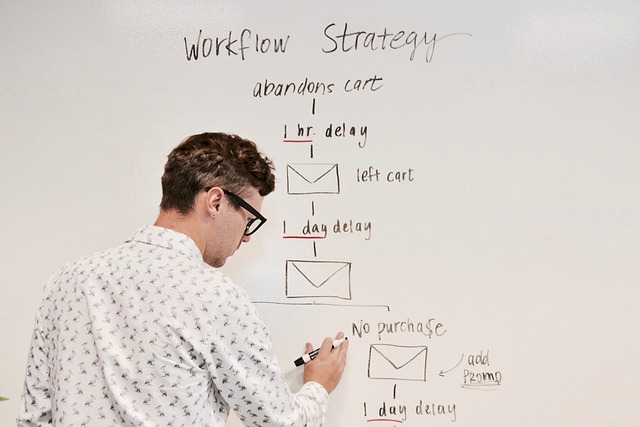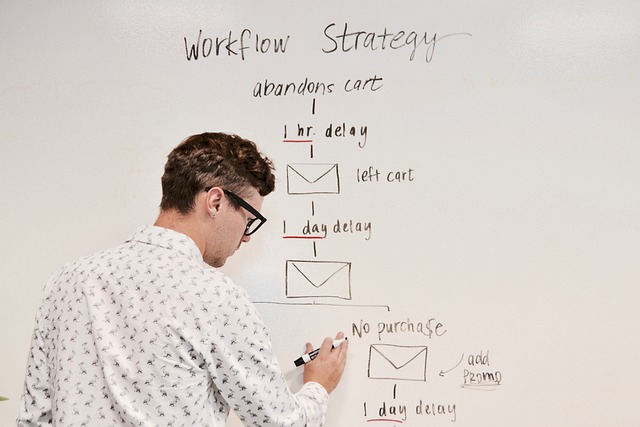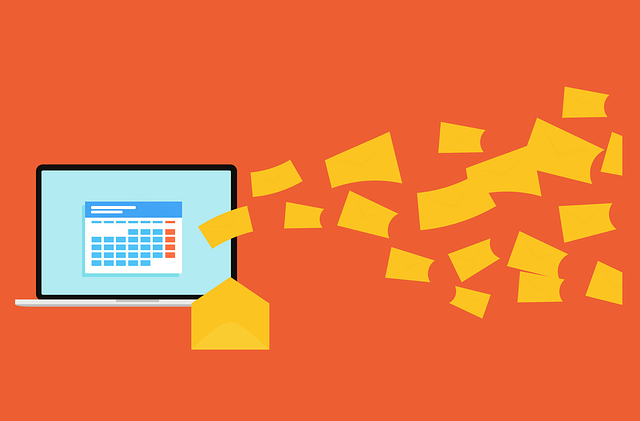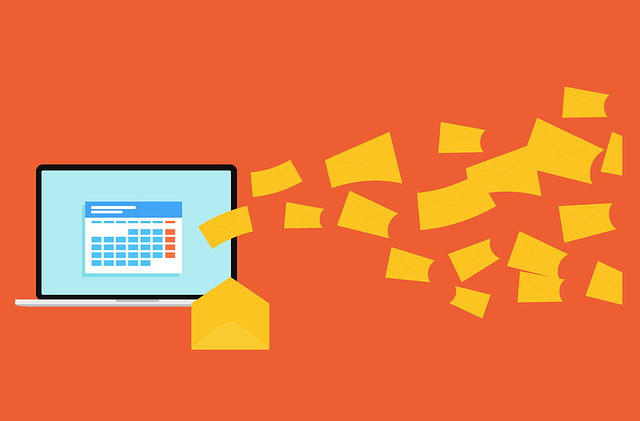Are you tired of your emails going unnoticed in crowded inboxes? It’s time to unlock the power of email automation and revolutionize your marketing strategy. Just like a key opens a door, email automation can unlock a world of possibilities for your business.
In this article, we will guide you through the best practices of email automation, from crafting compelling subject lines to optimizing email content and refining timing. By implementing these strategies, you will not only capture your audience’s attention but also keep them engaged and eager to open your emails.
We will show you how to:
- Segment your audience effectively
- Personalize your follow-ups
- Monitor and analyze performance to continuously improve your email campaigns.
Get ready to take your email marketing to the next level and experience the transformative impact of email automation.
Key Takeaways
- Crafting compelling subject lines is crucial for grabbing attention and increasing open rates
- Segmenting audience based on preferences and behaviors allows for tailored campaigns
- Personalization strategies improve click-through and conversion rates
- Testing and refining timing helps determine when audience is most likely to engage
Craft Compelling Subject Lines
Crafting compelling subject lines is crucial to grab your audience’s attention and make them eagerly open your emails. To improve open rates and increase click throughs, it’s important to create subject lines that are irresistible.
Start by keeping them short and concise, around 50 characters or less. Use action verbs and personalize the subject lines to make them more engaging. You can also create a sense of urgency or curiosity by including numbers or asking questions.
Experiment with different subject lines and analyze the results to see what works best for your audience. Once you’ve mastered the art of crafting compelling subject lines, it’s time to move on to the next step: segmenting your audience based on their preferences and behaviors. This will allow you to tailor your emails to specific groups, increasing the chance of success.
Segment Your Audience
Developing distinct target groups will help you tailor your message to specific subsets of your audience, ensuring more engaging and effective email campaigns. Personalization strategies are key in creating targeted campaigns that resonate with individual recipients.
By segmenting your audience based on demographics, interests, or past interactions, you can deliver content that feels personalized and relevant to each group. This not only increases the chances of your email being opened, but also improves click-through and conversion rates.
For example, you can send different offers to customers who’ve previously purchased from you versus those who’re new to your brand. By understanding your audience and delivering content that speaks directly to their needs and preferences, you can create a stronger connection and drive better results.
Now, let’s dive into how to optimize email content for even more impactful campaigns.
Optimize Email Content
When optimizing your email content, it’s important to focus on value and relevance to grab your audience’s attention.nnMake sure your emails provide valuable information or offers that are tailored to their needs and interests.nnAdditionally, use eye-catching visuals and formatting to make your emails visually appealing and easy to read.nnThis will help ensure that your message stands out and resonates with your audience.
Focus on Value and Relevance
Ensure your email content offers valuable and relevant information to your recipients, creating a visual feast of ideas that they can’t resist clicking on. To achieve this, follow these personalization tactics and engaging email copy techniques:
-
Understand your audience: Segment your email list based on demographics, preferences, and behavior to deliver personalized content that resonates with each recipient.
-
Craft compelling subject lines: Grab attention with concise, intriguing subject lines that highlight the value your email provides.
-
Use storytelling techniques: Engage readers by telling a story or sharing a relatable experience that connects with their emotions.
-
Provide exclusive offers or incentives: Give recipients a reason to take action by offering special discounts, freebies, or limited-time promotions.
By implementing these strategies, you’ll create email content that captivates your audience and compels them to click and engage.
Now, let’s explore how you can further enhance your emails with eye-catching visuals and formatting.
Use Eye-Catching Visuals and Formatting
Create visually stunning emails that capture your audience’s attention with captivating images, vibrant colors, and visually appealing formatting. Visual storytelling is a powerful tool that can enhance the effectiveness of your email marketing campaigns. Incorporating graphic design tips can help you create visually engaging emails that leave a lasting impression on your subscribers. To achieve this, consider using high-quality images that are relevant to your message, and use bold colors to draw attention to important elements. Additionally, utilize formatting techniques such as bullet points, headings, and white space to make your emails easy to read and navigate. By implementing these strategies, you can create emails that not only inform but also entertain and inspire your audience. As you move forward, it’s important to test and refine the timing of your emails to ensure maximum impact. Transitioning into the next section, let’s explore how to test and refine your email timing for optimal results.
Test and Refine Timing
Discover the perfect timing for your email campaigns with our test and refine methods.
In order to optimize the effectiveness of your email marketing, it’s crucial to refine the delivery timing and test the frequency of your emails.
By experimenting with different send times and days of the week, you can determine when your audience is most likely to engage with your content. This strategic approach ensures that your emails are delivered at the right moment, increasing the chances of them being opened and read.
Additionally, testing the frequency of your emails allows you to find the sweet spot between staying top of mind and avoiding overwhelming your subscribers.
By finding the optimal timing and frequency, you can maximize the impact of your email campaigns.
Now, let’s move on to the next section about automating personalized follow-ups.
Automate Personalized Follow-Ups
Make sure you never miss an opportunity to connect with your audience by automating personalized follow-ups that show them you value their engagement. One effective way to do this is by setting up automated reminder emails.
These emails can be triggered based on specific actions or time intervals, allowing you to stay top of mind for your audience. When creating these follow-up emails, it’s important to use personalized templates that speak directly to the recipient. Address them by name and reference their previous interactions with your brand. This will make the email feel more authentic and increase the chances of engagement.
By automating these personalized follow-ups, you can save time while still maintaining a high level of customer satisfaction.
Now, let’s move on to the next section about monitoring and analyzing performance…
Monitor and Analyze Performance
To effectively monitor and analyze the performance of your email automation efforts, it’s crucial to track key metrics and key performance indicators (KPIs).
By doing so, you can gain valuable insights into the success of your campaigns and identify areas for improvement.
Armed with this data, you can make data-driven adjustments to optimize your email automation and achieve even better results.
Track Key Metrics and KPIs
Keep an eye on important metrics and KPIs to gauge the success of your email automation efforts and make data-driven decisions. To effectively track the performance of your email campaigns, consider the following key metrics and KPIs:
-
Conversion rate analysis: Measure the percentage of recipients who take the desired action, such as making a purchase or signing up for a newsletter.
-
Open rate: Monitor the number of people who open your emails to assess the effectiveness of your subject lines and email content.
-
Click-through rate (CTR): Analyze the percentage of recipients who click on links within your emails to evaluate the relevance and engagement of your content.
-
Bounce rate: Keep an eye on the number of emails that are undeliverable to identify potential issues with your email list or infrastructure.
-
Unsubscribe rate: Track the number of recipients who unsubscribe from your emails to understand the impact of your campaigns on subscriber retention.
By consistently tracking these metrics and KPIs, you can gain valuable insights and make data-driven adjustments to improve your email automation results.
Make Data-Driven Adjustments to Improve Results
Now that you’ve tracked key metrics and KPIs, it’s time to make data-driven adjustments to improve your email automation results.
By analyzing the data you’ve gathered, you can identify patterns and trends that will guide your next steps. Use these insights to refine your email content, subject lines, and timing.
With data-driven strategies, you can personalize your messaging and target specific segments of your audience more effectively. By tailoring your emails to meet their needs and preferences, you’ll increase engagement and conversion rates.
Experiment with different approaches and measure the impact of each adjustment to continuously optimize your email automation campaigns. Remember, the power of data lies in its ability to drive informed decisions and deliver results that truly resonate with your customers.
Frequently Asked Questions
How can I ensure that my subject lines stand out in a crowded inbox?
Want to make sure your emails get noticed in a crowded inbox? Improving open rates starts with crafting compelling subject lines. But you might be thinking, ‘How can I stand out when everyone else is trying to do the same?’
Well, here’s the secret: be unique and personalized. Use the recipient’s name or mention something relevant to them. This personal touch will catch their attention and increase the chances of them opening your email.
What are some effective ways to segment my email audience?
To effectively segment your email audience, employ personalization techniques and behavioral segmentation. By tailoring your messages to specific groups based on their interests, demographics, or past actions, you can deliver more relevant and engaging content.
This targeted approach increases the likelihood of conversion and customer satisfaction. By understanding your audience’s preferences and behaviors, you can create personalized experiences that resonate with them, leading to stronger relationships and higher engagement rates.
Are there any specific elements I should focus on to optimize my email content?
To optimize your email content, focus on personalization techniques and A/B testing.
Tailor your message to each individual recipient, using their name and specific interests to create a personalized experience.
A/B testing allows you to experiment with different elements like subject lines, visuals, and CTAs to see what resonates best with your audience.
By incorporating these strategies, you’ll create engaging and impactful emails that connect with your customers on a deeper level and drive better results.
How can I determine the best timing for sending my automated emails?
To determine the best timing for sending your automated emails, you need to consider email personalization and email deliverability.
By analyzing your audience’s behavior and engagement patterns, you can identify the optimal time to reach them. This will ensure that your emails are delivered when they’re most likely to be opened and read.
By sending emails at the right time, you can increase your chances of engaging your customers and driving conversions.
What are some strategies for effectively monitoring and analyzing the performance of my automated email campaigns?
To effectively monitor and analyze the performance of your automated email campaigns, you need to focus on email metrics and A/B testing.
While you may think this requires a lot of time and resources, it’s actually a crucial step in optimizing your campaigns for better results.
By tracking metrics like open rates, click-through rates, and conversion rates, you can identify what’s working and what needs improvement.
A/B testing allows you to experiment with different elements like subject lines, CTAs, and content to find the most effective strategies for your audience.
Conclusion
You’ve learned the secrets to email automation success.nnBy crafting captivating subject lines and segmenting your audience, you’ll grab attention and engage your customers.nnOptimize your email content to deliver valuable information and test different timings to find the sweet spot.nnAutomate personalized follow-ups to create a sense of connection and monitor performance to make data-driven improvements.nnWith these best practices, you’ll soar above your competition like a majestic eagle, captivating your audience and driving results.nnYour customers will be eagerly awaiting your next email.







